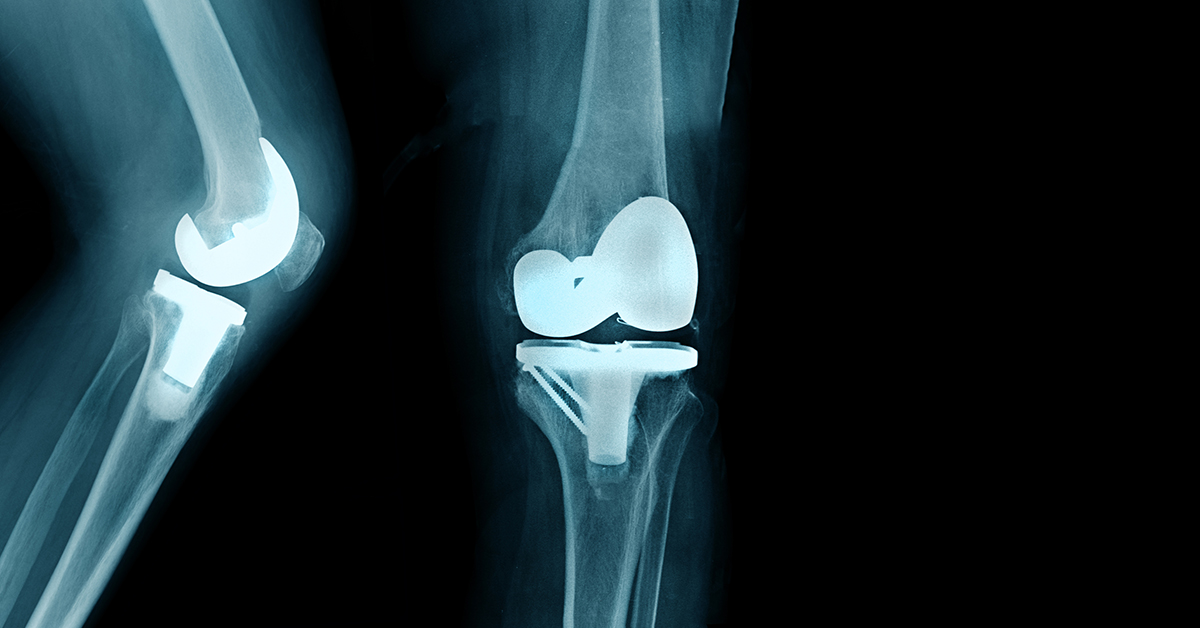
What is Total Knee Replacement?
Replacement is a surgical procedure where the ends of the bones that form the joint are replaced by prosthetic devices.
When is a Total Knee Replacement Performed?
A total knee replacement is indicated in individuals whose knee joint has been damaged due to long-standing trauma or age-related degeneration. Osteoarthritis and osteoporosis are well recognised indications. Severe rheumatoid arthritis of the knee joint is another indication for joint replacement.
How is Total Knee Replacement Performed?
The procedure is performed under general anaesthesia. Once consent has been obtained, the affected knee joint is cleaned with an antiseptic solution and covered in sterile drapes. The patient is placed in an ideal position to obtain clear access to the knee joint.
An incision is made over the knee joint and the first thing that is clearly visible is the kneecap, also called the patella. This bone is moved out of the way to get clear access to the knee joint.
The bones that form the knee joint include the lower end of the femur and the upper end of the tibia. In between, there is a large amount of cartilage and synovial fluid. Any damaged tissue is excised gently and the underlying bone is re-shaped to allow the prosthetic components to be attached to them.
Metallic prosthetic devices that fit snugly on the low end of the femur and upper end the tibia are held together in position using bone cement. On top of the metallic prosthetic device that is attached to the upper end of the tibia, a plastic spacer is placed, which is what the lower end of the femur sits upon. This allows the femur bone to move smoothly over the surface of the tibia.
The patella is then reshaped as well and put back into its previous place. This helps to maintain the normal anatomical shape of the knee joint.
After the Procedure
Following the procedure and before closing the knee joint incision, the surgeon will perform different movements of the knee joint to ensure that they are stable and safe. This can include bending and mild twisting of the joint. These are the sorts of movements that are performed regularly by the knee joint.
Once this has concluded, the incision is sutured closed and a bandage is applied. Patients are observed in the hospital for a few days and then discharged and allowed to go home. Once a sufficient amount of healing has occurred, physical therapy will be offered to the patient to allow them to restore their normal mobility.
Benefits and Risks
The most important benefit of total knee replacement is the disappearance of pain in the knee joint and the restoration of complete movement. This allows patients to eventually get back to leading the normal quality of life they had before the operation.
The risks are minimal and can include bleeding, bruising and infection within the replaced joint. These symptoms often pass in a few days, though infections may require a course of antibiotics. In the rare cases, surgical inspection of the joint may need to be performed again. Allergic reactions to general anaesthetic are rare.
